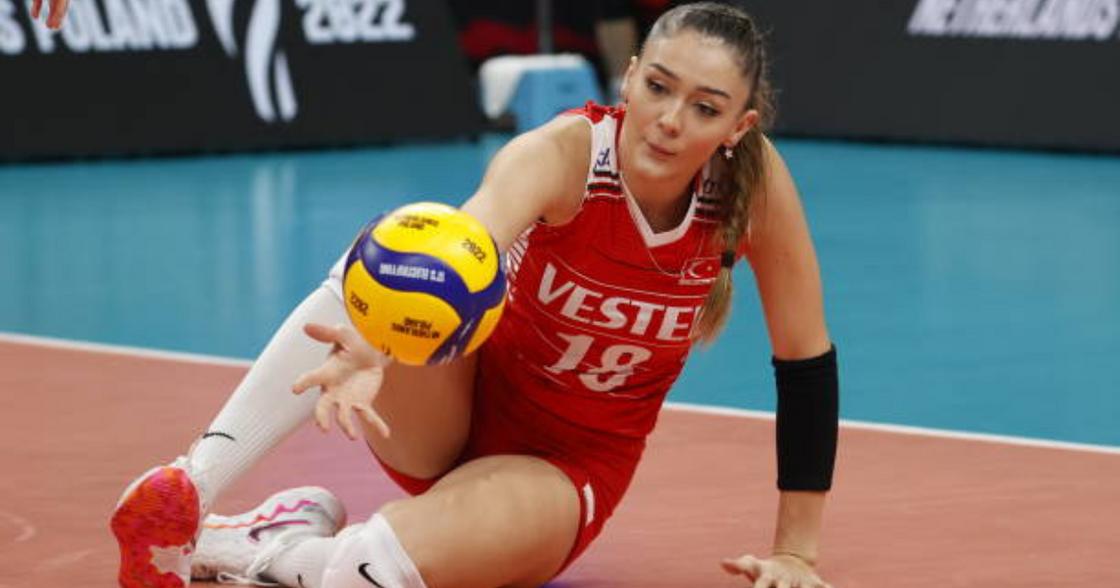Introduction
Volleyball is a dynamic and fast-paced sport that combines athleticism, strategy, and teamwork. Whether played on a beach or an indoor court, volleyball has become one of the most popular sports globally, attracting millions of players and fans. This comprehensive guide will explore the intricacies of the game, from its rich history to the skills required to excel. Volleyball, which was invented in 1895 by William G. Morgan, was initially created as a less strenuous alternative to basketball. Over the years, it has evolved into a highly competitive sport with a universal appeal, played in various formats, including indoor, beach, and even sitting volleyball for disabled athletes.
Rules and Regulations of Volleyball
Understanding the rules of volleyball is essential for both players and spectators. The basic rules of the game involve two teams of six players each, aiming to score points by grounding the ball on the opponent’s side of the court. Matches are typically played best-of-five sets, with the first team to reach 25 points (and be at least two points ahead) winning the set. However, if a match reaches a fifth set, that set is played to 15 points.
Scoring System: Volleyball uses a rally scoring system, where a point is awarded on every serve, regardless of which team served. This system keeps the game exciting and fast-paced, as points are continuously awarded, contributing to the overall score.
Positions and Rotations: Players rotate in a clockwise direction after winning a point on their opponent’s serve. Each player has a specific role on the court, with positions including the setter, outside hitter, middle blocker, opposite hitter, and libero. Understanding these positions and their responsibilities is crucial for strategic play.
Understanding the Volleyball Court
The volleyball court is a rectangular area measuring 18 meters long and 9 meters wide, divided by a net that is 2.43 meters high for men and 2.24 meters high for women. The court is marked with lines to designate different zones, including the attack line, service line, and back row.
Court Dimensions: The dimensions of the court are standardized for competitive play, ensuring uniformity across different venues. The net’s height can vary depending on the level of play, with adjustments made for youth and recreational leagues.
Net Specifications: The net plays a pivotal role in volleyball, serving as both a physical barrier and a strategic tool. It is crucial for players to understand the rules regarding net contact and how it affects play.
Markings and Zones: The court is divided into six zones, each corresponding to a player’s position. Understanding these zones is essential for proper rotation and positioning during the game.
Essential Volleyball Skills
To excel in volleyball, players must master several core skills. These include serving, passing, setting, and hitting. Each of these skills requires a combination of technique, timing, and precision.
Serving Techniques: Serving is one of the most crucial aspects of volleyball, as it initiates play. There are various serving techniques, including the float serve, jump serve, and topspin serve, each with its unique advantages and challenges.
Passing Techniques: Passing, or “bumping,” is the first step in a team’s offensive play. A good pass sets up the setter to deliver an accurate set, making it a critical skill for all players.
Setting Techniques: The setter is often considered the quarterback of the volleyball team. Setting involves delivering the ball to a hitter with precision and timing, often determining the success of an offensive play.
Hitting Techniques: Also known as spiking, hitting is the act of attacking the ball to score points. It requires power, timing, and accuracy, with different types of hits such as the power hit, roll shot, and tip.
Advanced Volleyball Techniques
For players looking to elevate their game, mastering advanced techniques is essential. These include strategies for blocking, defense, and offense that can turn the tide of a match.
Blocking Strategies: Blocking is a defensive skill used to stop or deflect an opponent’s attack. Effective blocking requires timing, positioning, and the ability to read the hitter’s intentions.
Defensive Techniques: Defense in volleyball is about more than just digging and blocking; it also involves strategic positioning and quick reflexes. Players must anticipate the opponent’s moves and react swiftly to keep the ball in play.
Offensive Strategies: Offense in volleyball is about creating opportunities to score points. This involves not only powerful hits but also strategic plays like quick sets, back-row attacks, and deceptive tips.
Volleyball Positions Explained
Each position on a volleyball team has specific responsibilities, and understanding these roles is crucial for team success.
Roles of Each Position: The setter orchestrates the offense, the libero specializes in defense, the outside hitter is the main attacker, the middle blocker focuses on blocking and quick hits, and the opposite hitter balances attack and defense.
Libero: The libero is a defensive specialist who cannot attack the ball above the net’s height. This position is vital for serve reception and defense, often wearing a different color jersey to distinguish themselves.
Setter: The setter touches the ball more than any other player, making split-second decisions to deliver the ball to the hitter with the best chance of scoring.
Outside Hitter: Often the primary offensive threat, the outside hitter must be versatile, able to attack from both the front and back rows, and contribute to the team’s defense.
Middle Blocker: The middle blocker is key to both defense and quick offensive plays. Their main job is to block the opponent’s hitters but also to execute quick attacks.
Opposite Hitter: Also known as the right-side hitter, this player needs to be strong in both attack and defense, often taking on the role of a secondary setter if needed.
Training for Volleyball
Training is essential for improving performance in volleyball. This involves a combination of fitness, conditioning, and practice drills tailored to different skill levels.
Fitness and Conditioning: Volleyball requires agility, speed, and power. A well-rounded fitness program that includes strength training, cardio, and flexibility exercises is crucial for success.
Drills for Beginners: Beginner drills focus on basic skills like passing, serving, and setting. These drills help players build confidence and develop a strong foundation.
Drills for Advanced Players: Advanced drills are designed to challenge experienced players, focusing on game-like scenarios, strategic plays, and high-intensity practice sessions.
Volleyball Equipment Guide
Having the right equipment can significantly impact a player’s performance. This includes the volleyball itself, shoes, knee pads, and appropriate clothing.
Choosing the Right Ball: The ball is the most critical piece of equipment in volleyball. Players should choose a ball that meets official size and weight standards and is suitable for the playing environment (indoor or beach).
Shoes: Volleyball shoes are designed to provide support, stability, and grip. They typically have non-marking soles and enhanced cushioning to absorb the impact of jumping and quick lateral movements.
Knee Pads: Knee pads protect players from the impact of diving and sliding on the court. They are essential for defensive players who frequently go to the ground to keep the ball in play.
Clothing: Comfortable, breathable clothing that allows full range of motion is essential for volleyball. Many players prefer moisture-wicking fabrics to stay dry during intense matches.
Volleyball for Beginners
For those new to volleyball, learning the basics is the first step toward becoming proficient. Beginners should focus on understanding the rules, practicing fundamental skills, and avoiding common mistakes.
Learning the Basics: Starting with basic skills like serving, passing, and setting will help beginners build a solid foundation. Watching matches and practicing regularly will also aid in learning the game.
Common Mistakes: Beginners often struggle with footwork, timing, and communication. Recognizing and correcting these mistakes early on is crucial for development.
Beginner Drills: Simple drills, such as passing back and forth with a partner or practicing serves against a wall, are excellent ways to build confidence and improve skills.
Volleyball Strategies and Tactics
Effective strategies and tactics can give teams a significant advantage in volleyball. These include offensive plays, defensive formations, and transition strategies.
Offensive Plays: Successful offensive plays often involve quick sets, combination plays, and well-timed attacks. Teams must also be unpredictable, using a variety of hits and tips to confuse the opponent.
Defensive Formations: Defensive strategies depend on the opponent’s strengths. Common formations include the “6-2” and “5-1” setups, which dictate the positioning of players on the court.
Transition Play: Transitioning from defense to offense quickly and efficiently is crucial for maintaining momentum. Teams must practice these transitions to avoid being caught off-guard by the opponent.
Volleyball Injuries and Prevention
Injuries are common in volleyball due to the sport’s physically demanding nature. Understanding how to prevent and treat these injuries is vital for player longevity.
Common Injuries: Volleyball players often experience injuries such as sprained ankles, knee pain, and shoulder issues. These injuries can result from overuse, improper technique, or accidents on the court.
Preventive Measures: Proper warm-up routines, strength training, and using the right equipment can reduce the risk of injury. Players should also focus on good technique and avoid overtraining.
Recovery and Rehabilitation: If injuries occur, it’s important to follow a structured recovery and rehabilitation program. This may include rest, physical therapy, and gradual return to play under professional supervision.
Volleyball Competitions and Tournaments
Volleyball is played at various levels, from local leagues to international tournaments. Understanding the structure of these competitions can enhance appreciation for the sport.
Major International Tournaments: The FIVB World Championship, the Olympic Games, and the World Cup are some of the most prestigious volleyball tournaments globally.
Olympic Volleyball: Volleyball has been a part of the Olympic Games since 1964. Both indoor and beach volleyball are Olympic sports, with intense competition among the world’s top teams.
Beach Volleyball Competitions: Beach volleyball, played on sand courts with teams of two players, has its own set of major competitions, including the AVP Pro Beach Volleyball Tour and the FIVB Beach Volleyball World Tour.
The Evolution of Volleyball
Volleyball has undergone significant changes since its invention. These changes reflect the sport’s growth and the impact of technology and globalization.
Changes in Rules Over Time: The rules of volleyball have evolved to make the game faster and more spectator-friendly. Changes such as the introduction of rally scoring and the libero position have transformed how the game is played.
Technological Advances: Technology has influenced volleyball in various ways, from the development of new training tools to the use of video replays and analytics in professional matches.
Volleyball’s Global Popularity: Volleyball’s popularity has exploded worldwide, with millions of players participating in recreational and competitive leagues. The sport’s inclusion in the Olympics has further increased its visibility.
Volleyball in Different Cultures
Volleyball is played and celebrated in different ways across the globe, with varying styles and levels of popularity.
Volleyball in the USA: In the United States, volleyball is a popular sport at both the collegiate and professional levels, with the NCAA hosting highly competitive tournaments.
Volleyball in Europe: European countries, particularly Italy, Poland, and Russia, have strong volleyball traditions, with professional leagues that attract top talent from around the world.
Volleyball in Asia: In countries like Japan and China, volleyball is a beloved sport with a strong following. These nations have produced some of the world’s top teams and players.
Beach Volleyball vs. Indoor Volleyball
While beach and indoor volleyball share similarities, there are key differences that make each version of the game unique.
Key Differences: Beach volleyball is typically played with teams of two, while indoor volleyball has six players per team. The playing surface, weather conditions, and equipment also differ significantly between the two versions.
Equipment: The ball used in beach volleyball is slightly larger and lighter than the one used indoors. Additionally, players often go barefoot on the sand, while indoor players wear specialized shoes.
Gameplay: Beach volleyball is generally slower-paced due to the sand, but it requires greater endurance and adaptability because of the smaller team size and varying weather conditions.
Famous Volleyball Players and Teams
Volleyball has produced many legendary players and teams who have left a lasting impact on the sport.
Legendary Players: Players like Karch Kiraly, Misty May-Treanor, and Giba are celebrated for their exceptional skills and contributions to volleyball’s global popularity.
Iconic Teams: Teams such as Brazil’s national team, the USA women’s team, and Italy’s men’s team have dominated international competitions, setting records and inspiring future generations.
Rising Stars: New talents are continually emerging in volleyball, bringing fresh energy and innovation to the sport. Keeping an eye on these rising stars is essential for fans of the game.
Volleyball Coaching and Leadership
Coaching in volleyball requires a deep understanding of the game, excellent communication skills, and the ability to motivate players.
Coaching Techniques: Effective coaching involves developing strategic plays, refining players’ skills, and fostering a positive team environment.
Building Team Chemistry: Team chemistry is crucial for success in volleyball. Coaches must work to build trust and collaboration among players, creating a cohesive unit on the court.
Leadership Skills: Leadership in volleyball extends beyond the coach. Captains and experienced players also play a vital role in guiding the team and setting an example for others.
Volleyball Drills for Skill Development
Drills are a fundamental part of volleyball training, helping players refine their skills and improve their performance.
Serving Drills: Serving drills focus on accuracy, power, and consistency. Players practice different types of serves to keep opponents guessing.
Passing Drills: Passing drills help players develop better control and precision, which are essential for setting up successful offensive plays.
Setting Drills: Setting drills are designed to improve a setter’s ability to deliver accurate and timely sets, often under pressure from opposing blockers.
Hitting Drills: Hitting drills focus on timing, approach, and technique, enabling players to execute powerful and strategic attacks.
The Mental Game in Volleyball
Mental toughness is a critical component of success in volleyball. Players must be able to stay focused, handle pressure, and maintain a positive mindset.
Building Mental Toughness: Mental toughness in volleyball involves resilience, confidence, and the ability to perform under stress. Techniques such as visualization and goal setting can help players develop this skill.
Focus and Concentration: Volleyball requires intense focus and concentration, especially during high-stakes moments in a match. Players must learn to block out distractions and stay in the moment.
Handling Pressure: Whether it’s serving match point or defending against a strong attack, handling pressure is key to success in volleyball. Players can improve their ability to manage pressure through experience and mental conditioning.
Future of Volleyball
As volleyball continues to grow in popularity, new trends and technological advancements are shaping the future of the sport.
Trends in Volleyball: Trends such as the increasing use of data analytics, the rise of beach volleyball, and the expansion of volleyball into new markets are influencing the sport’s future.
The Role of Technology: Technology is playing an ever-greater role in volleyball, from training aids to in-game analytics and video review systems.
What’s Next for Volleyball: The future of volleyball looks bright, with continued growth in participation, innovation in training and equipment, and greater exposure through digital platforms and international competitions.
FAQs on Volleyball
What is the difference between beach volleyball and indoor volleyball?
Beach volleyball is played with two players per team on sand, while indoor volleyball is played with six players per team on a hard court. The equipment, court size, and strategies also differ between the two formats.
How do I choose the right volleyball for me?
When choosing a volleyball, consider whether you will be playing indoors or on the beach, as the balls are designed differently for each surface. Ensure the ball meets official size and weight standards.
What are the most common injuries in volleyball?
The most common injuries in volleyball include sprained ankles, knee pain, and shoulder issues. These injuries can be minimized through proper warm-ups, strength training, and using the correct technique.
How can I improve my volleyball skills?
Improving volleyball skills requires regular practice, focusing on core techniques like serving, passing, setting, and hitting. Participating in drills, playing in matches, and seeking feedback from coaches are also important.
What is the role of the libero in volleyball?
The libero is a defensive specialist who cannot attack the ball above the net’s height. They wear a different color jersey and are primarily responsible for serve reception and back-row defense.
What are some key strategies in volleyball?
Key strategies in volleyball include using a variety of offensive plays to keep the opponent off-balance, forming effective defensive formations, and transitioning quickly between defense and offense.
Conclusion
Volleyball is a sport that offers excitement, challenge, and a sense of community for players and fans alike. Whether you are just starting or looking to refine your skills, understanding the game’s intricacies is essential for success. This guide has covered everything from basic rules to advanced techniques, equipment, and the future of the sport. As volleyball continues to evolve, it remains a dynamic and inspiring game that brings people together worldwide.



